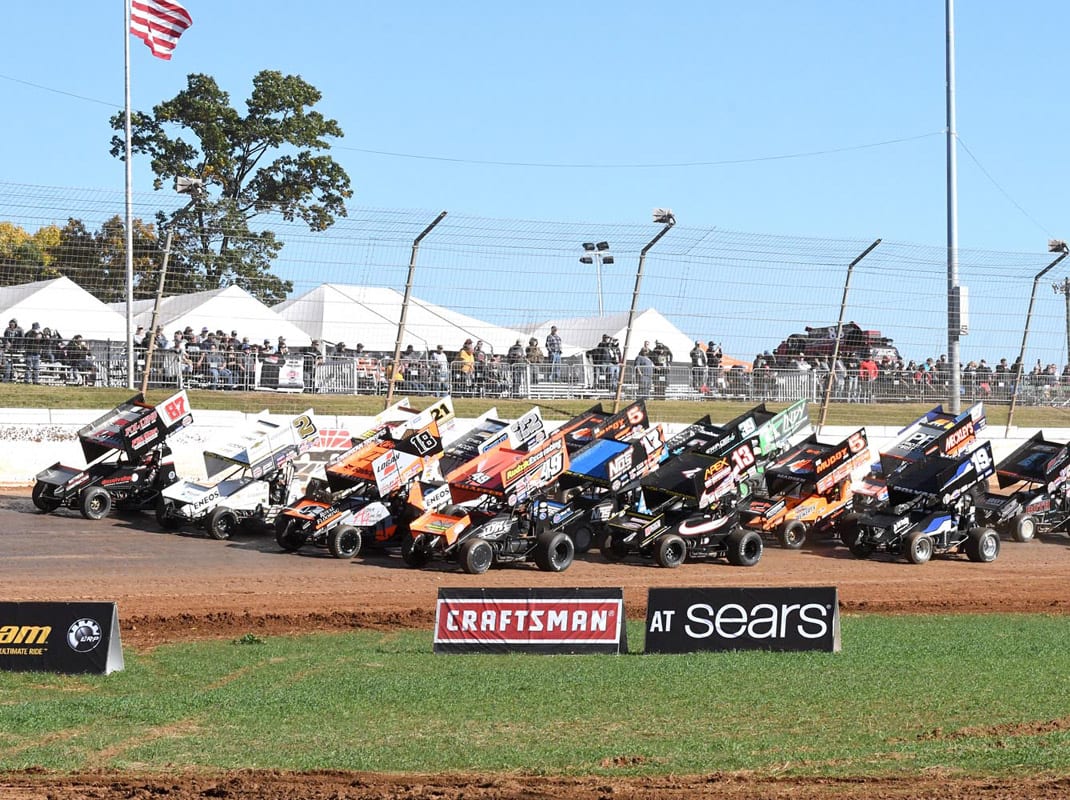With three different types of race cars and a stacked roster of competitors in each division, there are a lot of opinions about what the track should end up looking like by the time the features roll around.
“The wants list is massive,” Deery said. “It’s the track prep crew’s (responsibility) to manage the difference between what’s available and what they feel the race teams will be looking for.”
Platfoot says his focus is on making sure the track provides an opportunity for drivers to produce great racing.
“I beat myself up on trying to make a track perfect for the fans,” he said. “That is my ultimate goal is to give the fans the best show. When the fans walk out and are talking about how good the race was, that’s what makes me happy. That’s a fine line of paying attention to what the dirt needs. It’s really a science and an art that’s hard to describe.”

However, a great race doesn’t mean as much if the fans aren’t able to see it.
“Our biggest challenge has been the dust,” said Fink, who has been working for World Racing Group for more than a decade. “This year, we’re going to try more calcium. (Last year,) we started World Finals and it got really dusty. We came in with calcium, but we needed to get it in earlier. Our plan this year is during the Short Track Championship to put calcium down and get it worked in and go from there.
“It makes the track harder. You’ll have some dust, but it’ll take a lot of the dust away.”
It’s a balancing act of keeping the dust down so the fans can see a great race, but also making sure the track isn’t too wet or heavy and allows side-by-side competition.
“They don’t like a heavy track,” Fink said. “We try to give them the best track we can. Sometimes it turns out that way, but usually Charlotte will slick off unless there’s a lot of rain. We try to get enough moisture in it to keep the racing going. Sometimes we’ll have to go out and cut the cushion down. But if you don’t get enough moisture in that’ll eat tires off.”
Then try juggling how to make the perfect track for sprint cars, which weigh roughly 1,400 pounds, versus 2,350-pound late models and 2,500-pound big-block modifieds. Platfoot says a track is normally packed tighter depending on the type of race car that is about to compete.
“For sprint cars, there aretimes I try to keep the middle slicker so they have good traction on the bottom and have slide jobs,” he said. “The track can be a little softer than for the late models. The big-blocks you have to have enough moisture and have it pretty tight because the way their bodies are and their suspensions. They’ll dig you a rut in a hurry. Late models, it’s an in between where you have to have it tight, but also if you get it too tight they’ll slick it off too fast and it’ll take rubber on a long race.”
With dozens of cars competing in each class and fans traveling from across the country to witness the action, track preparation is a key to the success of the World Finals — an event that might be the toughest on any track crew.
“I would say it’s right up there just because of the number of cars, the number of laps and the different types of cars,” Deery said. “You’re at the max at every category.”
The pressure is on each fall when a handful of track maintenance guys converge in North Carolina to make sure the drivers have a racy track that offers multiple lanes and the fans are able to view the action clearly. It’s always a work in progress and Mother Nature has a tendency to throw in a few speed bumps, but the long hours and watchful eyes from the track crew have helped the World Finals transform into a crown jewel event.
